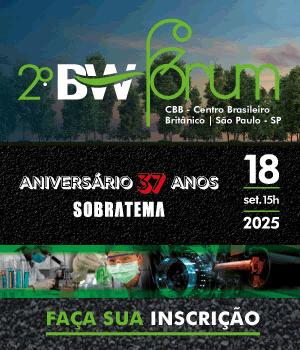Eternal youth
Retrofit techniques are used to revitalize buildings, preserving their original architectural features and adapting them to match current standards and patterns of comfort, functionality and sustainability
Years go by, societies change and cities are transformed. Not always for the better, this is true. As years go by, several old buildings did not follow the transformations of the city and lost its functionality. Even those with architectural design that characterized a period and have high aesthetic value pass through this process. They are rare jewels that have to be preserved but that do not fit the model of modern cities. Who would imagine, for example, that when designing a building in style art déco in 1920 in the center of São Paulo, slopes and large elevators would be necessary for a future demand of access for handicapped people?
In a way to ensure the revitalization of these buildings, preserving their original features but adapting them to the current necessities and the parameters established by the regulations, retrofit is being consolidated as a strong trend. Besides to be an important solution for revitalization and requalifying of degraded urban spaces such as Luz, in the old center of São Paulo, or the Port area of Rio de Janeiro, the set of techniques used in the retrofit may be an alternative for areas where space for new buildings do not exist or where land price is prohibitive. Buildings worn by the use or by the age, refurbished by a retrofit process may increase its current value up to 100 percent.
International trend, retrofit starts to appear in São Paulo, after being used in larger scale in Rio de Janeiro, where the buildings are older, mostly being more than 50 years old (to allow the use of retrofit, buildings have to be at least 20 to 30 years old). In São Paulo they are concentrated in traditional neighborhoods such as Higienópolis and in the region of Paulista Avenue, going to regions such as Morumbi and Moema.
Change of purpose
Retrofit may also allow a change in the purpose of a building, depending on the vocation of the region where it is located. As time goes by, a residential area may get commercial features. Therefore, the retrofit may be used to transform a residential building in a commercial one and vice-versa.
This is what happened with an old monastery of neoclassic architecture—built in 1830 and abandoned for 20 years—located in the region of Tijuca, in the northern zone of Rio de Janeiro. From home of priests that were looking for isolation, the Convento Bom Pastor—protected as historic heritage by the Instituto do Patrimônio Histórico do Município do Rio de Janeiro—was transformed in a high-level residential building with 37 modern and full-equipped lofts, with no changes in its original features.
The retrofit was carried out by the Construtora Calçada in partnership with Montserrat. The Project was named Atrium—latin word that means the central yard of Greek and Roman houses and that is also used to name the hall and covered spaces in front of churches—in a reference of its internal yard that is one of the main features of the monastery. This area—with a total of about 400 sq.mt.—was transformed in a leisure and coexistence area with landscaping developed by Roberta Ventura.
The design was developed using current concepts of sustainability: taps with automatic closing in the common areas, selective collection of garbage, reuse of rain water to clean the common areas, preparation for individual hydrometers, lighting with presence sensors in the common areas.
In addition to the retrofit of the old monastery, the project included the construction of two residential towers, in a total of 220 apartments with area between 85 and 105 sq.mt., each one having three or four bedrooms, and a second leisure area having swimming pool, sauna, barbecue, music room, gourmet room and sport court. Investment was of R$ 4 million in the retrofit and construction. All loft units were sold in the first day.
Luxury Hotel
The impressive building in art déco and art nouveau style, built in 1930 and located in the Castro Alves Square, in the center of Salvador (BA), former headquarter of the newspaper A Tarde will soon return to its days of glory. The building with 4400 sq.mt. of area—abandoned during decades—is passing by a complex process of retrofit to receive a new Hotel Fasano, world reference in luxury hotels. This is a private project that belongs to the Spanish developer Prima Empreendimentos Inovadores. A project estimated in R$ 40 million, the hotel will have 60 rooms—four of them will be master suits of 33 sq.mt.—café restaurant in the front porch, bar, swimming pool, business center, fitness room, SPA and convenience store. A new floor will be built above the actual roof and a mezzanine will be built in the ground floor, using the double abutment and the division of underground floors.
Protected as a historic heritage by the Patrimônio Histórico e Artístico Nacional (Iphan), the facade of the old building will be preserved and highlighted in the new hotel. Internal decorative elements—such as details of the walls and ceiling—will be maintained, restored and preserved.
Two buildings, two stories and a successful case
Two buildings of different ages and styles that were abandoned during years were connected and refurbished through retrofit techniques to install the Art Museum of Rio (MAR), one of the cultural anchors of the urban requalification program of Rio de Janeiro port area, known as Porto Maravilha. These buildings are the Palazzo Dom João VI, of eclectic style, built in 1916 and its neighbor, of modern style, built in the 40s, both located in the Maua Square. The main challenge of the project was to connect such different buildings, turning them into a unique architectural complex where the Escola do Olhar started to operate together with the museum.
The complex has the purpose of develop education and art projects involving teachers, educators and students of the public school network. The project results from the partnership between Rio de Janeiro City Government and the museum, curated by the renowned critic Paulo Herkenhoff. The architectural design was of Bernardes+Jacobsen Arquitetura and the structural calculations of the sea-like roof installed over the buildings were developed by Bruno Contarinni.
Works were started in the end of 2009 and concluded in March, 2012. At first, the idea was to refurbish only the small palace to transform it in an art museum. But the government and the Fundação Roberto Marinho felt that the project could be more comprehensive if the next edification was aggregated. According to the architect Claudia Coutinho, Project Coordinator of the Fundação Roberto Marinho—responsible by the supervision of the design and works of the complex—both buildings were quite different in structure and finishing. “Our challenge was to compose a dialogue between them. The sea-like roof—that seems to float over both buildings—assumes this role, being a link between them. In addition, it is a large shelter for all people that go to the building”.
Works started in March, 2010 in the small palace, abandoned by more than ten years. Deteriorated and not architecturally qualified, it was showing the real dimensions of this challenge as works went on. The building slabs were too thin and had to be refurbished and reinforced. There were also some small rooms whose walls had to be demolished to open place for the eight exhibition rooms of the museum.
Felipe Menezes, engineer of Concrejato that managed the civil works from the recovering and reinforcement of slabs to the final finishing and fittings, describes what was carried out to reinforce the building structure. “It is completely built with bricks. With the demolition of part of its internal walls, a very heavy and piled stairway in reinforced concrete was built. It passed to have a structural function, supporting with its cantilever a part of the weight of a catwalk build in the top, connecting both buildings”.
Other heavy intervention was necessary to support the fluid roof, which copies the movement of the sea. This roof would be a huge weight to be supported by the structure of the palazzo. The solution was a reinforcement of the foundations with metallic piles that went from the ground floor to the roof and worked as a support for the additional load represented by the roof structure.
The modern building also demanded special care. “We had more liberty to work but other difficulties would occur. We had no technical information about the building, we did not found design documents, we did not know all structural questions involved in the works. Therefore we carried out several prospections, for example to understand the dimensions of the slabs”, remembers Claudia Coutinho.
The concrete structure was in good conditions, low-degraded and demanding only punctual repairs. Structural reinforcements were not needed but the old elevators were removed and the old stairways were demolished and replaced by new stairways and elevator shafts that gave bracing and reinforcement to the building, enough for its new use.
The installation of the metallic catwalk connecting both buildings by the top—and where the view of the Guanabara Bay is privileged—was also a challenging work. The metallic structure weights about 40 tons and was built in three sections welded in place. In the Palazzo Dom João VI, it is mounted on a cantilever slab that starts from the new concrete stairways. In the other building, it comes from prestressed beams, built only to support it.

Av. Francisco Matarazzo, 404 Cj. 701/703 Água Branca - CEP 05001-000 São Paulo/SP
Telefone (11) 3662-4159
© Sobratema. A reprodução do conteúdo total ou parcial é autorizada, desde que citada a fonte. Política de privacidade











